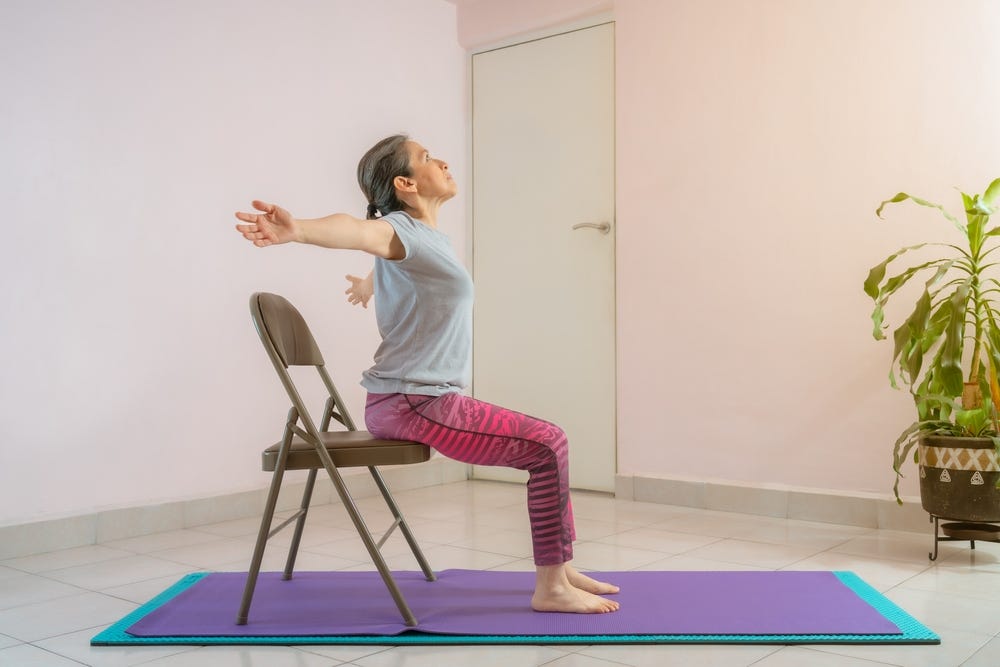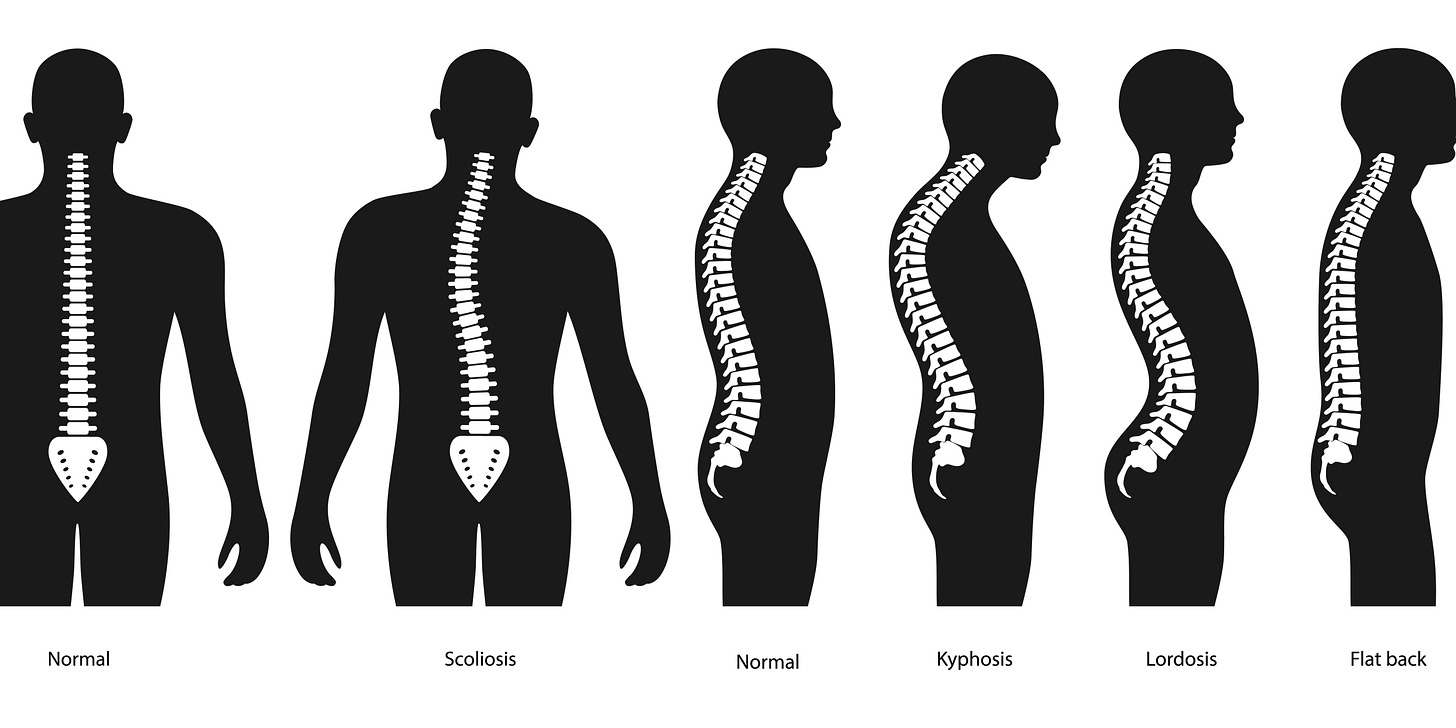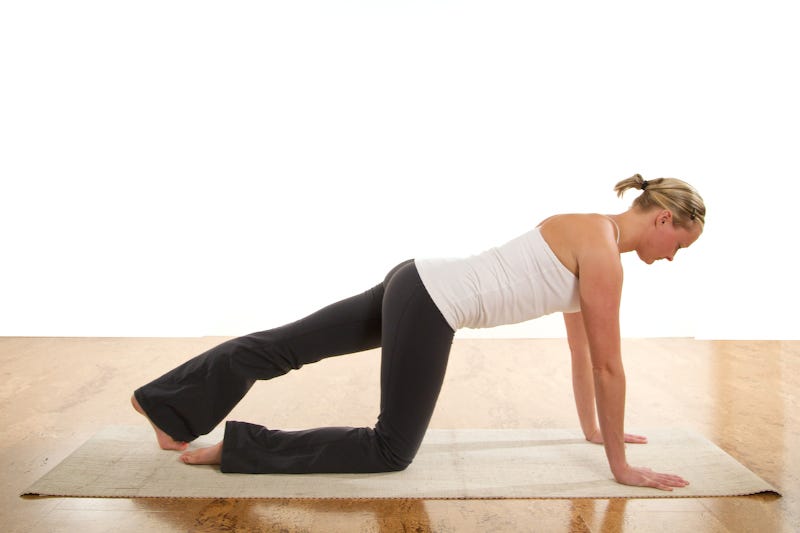Teaching the verifiable benefits of yoga poses to reduce stress, increase concentration, reduce chronic pain and inflammation, and much more.
Yoga teachers: you may wish to counter common misperceptions about yoga by keeping the focus on helping people to understand the purpose and well-researched value of asana.
Contents
Why Poses?
How Do Poses (and Yoga as a Whole) Work?
Why Not, Poses?
Assisting Clients in Overcoming Resistance
Teaching Support & Inspiration
Resources
Why Poses?
Yoga teachers are well aware that the philosophy, tools, and techniques of yoga are vast, encompassing far more than asana. And yet it’s the poses that are typically an entryway for people.
This is as it should be since most of us have one or more of these, for example:
Nervous system dysregulation (chronic stress)
Unhealed trauma
Chronic pain, fatigue or other illness or injury
Yoga poses are an effective tool to relieve such critical issues, returning the body and mind to greater balance. From this state, the person finds immediate relief of physical and mental symptoms that have been plaguing them.
With additional time, they find that not only do they feel temporarily better from poses, but that they’re progressively improving their overall quality of life. From a state of greater balance, we inevitably regain a sense of freedom and power to make more conscious and empowered choices in our life.
It’s reasonable to be skeptical. How can this be? Well, dozens, dozens and more dozens of clinical studies explain to us why this is the case.
How Do Poses (and Yoga as a Whole) Work?
Nervous system regulation
Research teaches us why we experience and see so many “miracles” from mindful asana practice. It demonstrates for us how incredibly profound it is to regulate the nervous system — the underlying physiological explanation for how a body can restore health.
With a regulated nervous system, the body miraculously performs cellular and physiological processes that create balance, health, and happiness. It’s widely understood (and excessively researched) that it is ONLY from this state that healing can happen. That is, a chronically stressed person, or one who, for any reason, spends an inordinate amount of time with an activated sympathetic nervous system will inevitably experience degraded health.
Epigenetic triggers, including switching off chronic inflammatory responses
But nervous system regulation isn’t the only reason that poses help so much. The field of epigenetics is absolutely vital for holistic practitioners to teach. I won’t make this article too long by getting into it here, but will instead just highlight the fact that (even) Harvard Medical School confirms the following.
Research shows that the relaxation response (nervous system regulation) is impacting the body in another, even deeper way. The relaxation response affects us at the deepest level of physical life, the cellular level, impacting which genes are turned on and off (called epigenetics). This sets off a series of powerful activities that relate to health including the health of telomeres and mitochondria.
Chronic inflammation overwhelms the immune system and causes additional symptoms. Chronic inflammation is on a short list of underlying causes of imbalance and disease. The Benson-Henry research shows that the relaxation response switches off genes associated with chronic inflammatory responses.
Eliciting the Relaxation Response Caused Genes to Turn On & Off That Have Extensive Positive Impacts on Health & Well-Being
Skeptics have long believed that meditation and other stress reduction techniques are nice but ineffectual practices that do little for you. Nothing could be further from the truth — and now we have the science to prove it… Exciting new research… suggests that the simple act of eliciting the relaxation response… temporarily changes the activity of certain genes… it switches off genes associated with chronic inflammatory responses. Many experts believe these inflammatory responses stress the body, possibly contributing to a host of chronic ailments, such as heart disease, inflammatory bowel disease, and diabetes. At the same time, it switches on genes linked with a variety of functions: the use of energy in the body, the release of insulin (which helps regulate blood sugar), the maintenance of telomeres (protective end-caps on our chromosomes that erode with age until a cell dies), and the functions of tiny cellular powerhouses called mitochondria… This information was prepared by the editors of the Harvard Health Publications division of Harvard Medical School.
Why Not, Poses?
But of course, there are sound reasons that people don’t practice yoga poses.
For those who haven’t tried asana, many have likely been assaulted by inaccurate media portrayals or improper marketing and delivery of yoga as:
A fitness fad
Irrelevant for health generally, or for people with illnesses
Only for the slim, athletic, and flexible
Only for certain social classes or upper income levels
A cultish subculture
While inaccurate media portrayals are one obstacle, so are situations where people tried yoga, but had a sub-optimal experience. They may have simply been exposed to a style that wasn’t suitable for them, and no one explained that a fast-paced flow wasn’t the right class for them, for example. Or they may have encountered an inexperienced, inadequately trained, or misguided yoga teacher who didn’t offer them proper individuated guidance, or who taught from a fitness-only or an unnecessarily complex or cultish perspective, for example.
Whether or not they’ve been misinformed about what yoga really is, some haven’t looked to yoga as they feel overwhelmed in their life, with no room or desire to try something new.
And even for those who’ve experienced the benefits of yoga poses, it can still be difficult to overcome the inertia required to incorporate practices into their lifestyle in a sustainable way — no matter how “good” they know it would be for them.
Assisting Clients in Overcoming Resistance
To respond to the realities of such understandable resistance, yoga teachers may wish to consider the following.
Be sure you’re constantly upgrading your ability to effectively adapt poses for many needs. I propose that even if you know a couple of alternative forms for each pose, that while that’s wonderful, there’s so much more that can help you help others. At Yoga Teacher Central, we’ve catalogued, in some cases, dozens of variations for a pose. But even more importantly, I think we all agree, is how and when to use them and what to say and ask your students while offering them. That’s why digging into not just the pose variations but also gaining a basic familiarity with various illnesses and injuries can make a significant difference in refining techniques and verbalization of them.
Since we live in a world of misinformation and overwhelm, you may find that focusing on the facts of how poses provide tangible benefit — both short-term and long-term — can be quite helpful. This can be done with clear communication, real-life examples, research, and repetition.
Teaching Support & Inspiration
See the resource list below to access further support and inspiration, organized for optimal efficiency. And below you’ll find a reading excerpted from the 2002 book, Yoga Rx by Larry Payne PhD and Dr. Richard Usatine MD. In their words, we hear how yoga generally (and poses particularly):
Decrease Stress & Increase Immunity
Improve Concentration & Relationships
Experience Peace Amid Difficulty
Many yoga practices counter the fight-or-flight response and invite the body to move in the opposite direction toward peace and calm. Gentle stretching lengthens your muscles, reducing physical tension. Yoga breathing slows your respiration. Inverted postures can help lower your blood pressure by decreasing your heart rate, relaxing your arteries, and reducing levels of the stress hormone noradrenaline. Resting yoga postures allow you to let go of physical and mental effort. Meditative practices help you put fear and anger into perspective. With increased calm and relaxation comes a decrease in your level of cortisol, an adrenal hormone that inhibits immune system function.…
Students who practice yoga regularly tell me that they find it much easier to become engrossed in their work and to remain undistracted for extended periods. They also report that their intimate relationships improve because they can stay present and available to partners and friends far more readily than before…
A yoga lifestyle can help heal your heart and mind, bringing you to a state of peace and well-being. This is where the true joy of living comes from, and you can have it even if you’re living with chronic illness or disability.










